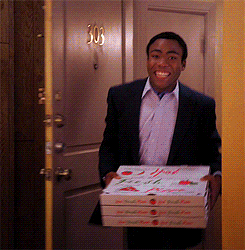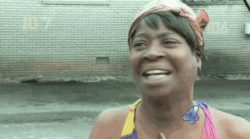http://www.teenvogue.com/story/digital-blackface-reaction-gifs
Interesting article. Not quite sure what to make of it. A few points I agree with but some of it, I just don't know man. Curious what people here think of it.
Adore or despise them, GIFs are integral to the social experience of the Internet. Thanks to a range of buttons, apps, and keyboards, saying “it me” without words is easier than ever. But even a casual observer of GIFing would notice that, as with much of online culture, black people appear at the center of it all. Or images of black people, at least. The Real Housewives of Atlanta, Oprah, Whitney Houston, Mariah Carey, NBA players, Tiffany Pollard, Kid Fury, and many, many other known and anonymous black likenesses dominate day-to-day feeds, even outside online black communities. Similar to the idea that “Black Vine is simply Vine,” as Jeff Ihaza determined in The Awl, black reaction GIFs have become so widespread that they’ve practically become synonymous with just reaction GIFs.
If you’ve never heard of the term before, “digital blackface” is used to describe various types of minstrel performance that become available in cyberspace. Blackface minstrelsy is a theatrical tradition dating back to the early 19th century, in which performers “blacken” themselves up with costume and behaviors to act as black caricatures. The performances put society’s most racist sensibilities on display and in turn fed them back to audiences to intensify these feelings and disperse them across culture. Many of our most beloved entertainment genres owe at least part of themselves to the minstrel stage, including vaudeville, film, and cartoons. While often associated with Jim Crow–era racism, the tenets of minstrel performance remain alive today in television, movies, music and, in its most advanced iteration, on the Internet.
Unlike other physical executions of blackface (such as by Robert Downey Jr. in Tropic Thunder, Sarah Silverman on her own show, Rachel Dolezal, or the authors of AB to Jay-Z) that require physical alternations and usually a change in demeanor (like Iggy Azalea’s “blaccent”), digital blackface is in some ways a more seamless transformation. Digital blackface uses the relative anonymity of online identity to embody blackness. In the case of Mandi Harrington, a white woman who masqueraded as the fictional “LaQueeta Jones,” digital blackface became a means for her to defend musician Ani DiFranco’s decision to host a retreat at a slave plantation. Digital minstrels often operate under stolen profile pictures and butchered AAVE. Quite often it comes in the form of an excessive use of reaction GIFs with images of black people.
After all, the emotional range these GIFs cover is quite large. Reaction GIFs are generally reserved for oddly specific yet also universal situations that we all can relate to: grabbing a snack to watch some drama unfold with MJ; witnessing an awkward encounter with Hov; walking into a garbage fire with Donald Glover; walking away from one with Angela Bassett; sipping with Wendy, Prince, or Bey; or delivering the shadiest side-eye imaginable with Viola Davis, Rihanna, James Harden, Tamar, Naomi Campbell, and truly too many other folks to name. The so-called “greatest meme of 2016,” at least according to BuzzFeed, featured rapper Conceited in the now-iconic GIF where he purses his lips and turns toward the camera with a red solo cup in hand.
Outside these cherry-picked, celeb-studded examples are countless reaction images of small sensations like Tanisha from Bad Girls Club and Ms. Foxy from Beyond Scared Straight, or relative unknowns, pulled from news coverage, YouTube, and Vines. These are the kind of GIFs liable to come up with a generic search like “funny black kid gif” or “black lady gif.” For the latter search, Giphy offers several additional suggestions, such as “Sassy Black Lady,” “Angry Black Lady,” and “Black Fat Lady” to assist users in narrowing down their search. While on Giphy, for one, none of these keywords turns up exclusively black women in the results, the pairings offer a peek into user expectations. For while reaction GIFs can and do every feeling under the sun, white and nonblack users seem to especially prefer GIFs with black people when it comes to emitting their most exaggerated emotions. Extreme joy, annoyance, anger and occasions for drama and gossip are a magnet for images of black people, especially black femmes.
Now, I'm not suggesting that white and nonblack people refrain from ever circulating a black person’s image for amusement or otherwise (except maybe lynching photos, Emmett Till’s casket, and videos of cops killing us, y’all can stop cycling those, thanks). There’s no prescriptive or proscriptive step-by-step rulebook to follow, nobody’s coming to take GIFs away. But no digital behavior exists in a deracialized vacuum. We all need to be cognizant of what we share, how we share, and to what extent that sharing dramatizes preexisting racial formulas inherited from “real life.” The Internet isn’t a fantasy — it’s real life.
After all, our culture frequently associates black people with excessive behaviors, regardless of the behavior at hand. Black women will often be accused of yelling when we haven’t so much as raised our voice. Officer Darren Wilson perceived a teenage Michael Brown as a hulking “demon” and a young black girl who remained still was flipped and dragged across a classroom by deputy Ben Fields. It's an implication that points toward a strange way of thinking: When we do nothing, we’re doing something, and when we do anything, our behavior is considered "extreme." This includes displays of emotion stereotyped as excessive: so happy, so sassy, so ghetto, so loud. In television and film, our dial is on 10 all the time — rarely are black characters afforded subtle traits or feelings. Scholar Sianne Ngai uses the word “animatedness” to describe our cultural propensity see black people as walking hyperbole.
If there’s one thing the Internet thrives on, it’s hyperbole and the overrepresentation of black people in GIFing everyone’s daily crises plays up enduring perceptions and stereotypes about black expression. And when nonblack users flock to these images, they are playacting within those stereotypes in a manner reminiscent of an unsavory American tradition. Reaction GIFs are mostly frivolous and fun. But when black people are the go-to choice for nonblack users to act out their most hyperbolic emotions, do reaction GIFs become “digital blackface”?
Then comes the more sinister side of this. Similar cases happen all over the comments section virtually anywhere, with or without a photo, often prefaced with statements like “as a black man…” before proceeding to sound like anything but. In other instances, digital blackface is an orchestrated attempt by white supremacists to disrupt black organizing. Writer Shafiqah Hudson started the hashtag #yourslipisshowing to document instances of digital blackface in real time, joined by other black women writers and theorists such as I’Nasah Crockett, Sydette Harry, Mikki Kendall, Trudy, and Feminista Jones. As the name of the tag suggests, online minstrels are no more believable than their in-person counterparts to anyone who knows black culture and black people, rather than a series of types. Unfortunately, digital blackface often goes unchecked unless a black person does the work to point out the discrepancies in someone’s profile.
But while these examples are particularly noteworthy for their malicious intent, digital blackface has softer counterparts, just like offline blackface. Digital blackface does not describe intent, but an act — the act of inhabiting a black persona. Employing digital technology to co-opt a perceived cache or black cool, too, involves playacting blackness in a minstrel-like tradition. This can be as elaborate as anon accounts like @ItsLaQueefa or as inadvertent as recruiting images of black queer men to throw shade at one’s enemies. No matter how brief the performance or playful the intent, summoning black images to play types means pirouetting on over 150 years of American blackface tradition.
Images of black people, more than anyone else, are primed to go viral and circulate widely online — in trauma, in death, and in memes. Reaction GIFs are an uneasy reminder of the way our presence is extra visible in life, every day, in ways that get us profiled, harassed, mocked, beaten, and killed. Long before the Internet or television, merry racist characters like pickaninnies and coons circulated the same social space as lynching postcards. Being on display has always been a precarious experience for black folks. Scholars such as Tina Campt and artists like Martine Syms consider what it means for black images to be reproduced as stock visuals in history and culture. “Representation is a sort of surveillance,” Syms recently told The New Yorker. Reaction GIFing looks less innocuous with the consideration of how overrepresented images of black people have become within the practice.
“[T]o be looped in a GIF, to be put on display as ‘animated’ at the behest of audiences,” as Monica Torres describes for Real Life, is an act with racial history and meaning. These GIFs often enact fantasies of black women as “sassy” and extravagant, allowing nonblack users to harness and inhabit these images as an extension of themselves. GIFs with transcripts become an opportunity for those not fluent in black vernacular to safely use the language, such as in the many “hell to the no,” “girl, bye,” and “bitch, please” memes passed around. Ultimately, black people and black images are thus relied upon to perform a huge amount of emotional labor online on behalf of nonblack users. We are your sass, your nonchalance, your fury, your delight, your annoyance, your happy dance, your diva, your shade, your “yaas” moments. The weight of reaction GIFing, period, rests on our shoulders. Intertwine this proliferation of our images with the other ones we’re as likely to see — death, looped over and over — and the Internet becomes an exhausting experience.
If you find yourself always reaching for a black face to release your inner sass monster, maybe consider going the extra country mile and pick this nice Taylor Swift GIF instead.
Interesting article. Not quite sure what to make of it. A few points I agree with but some of it, I just don't know man. Curious what people here think of it.







